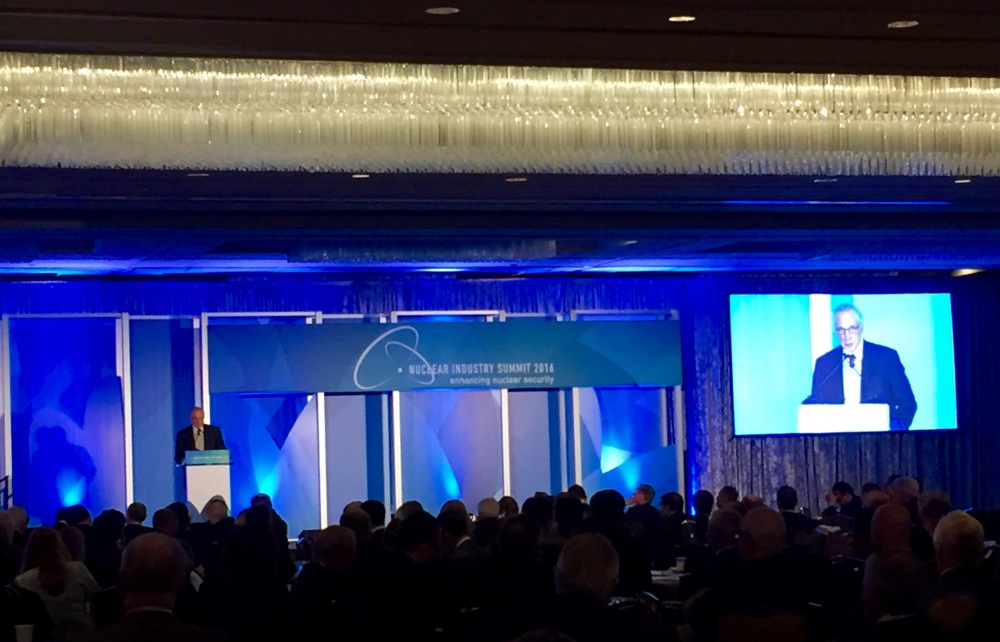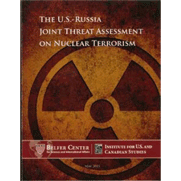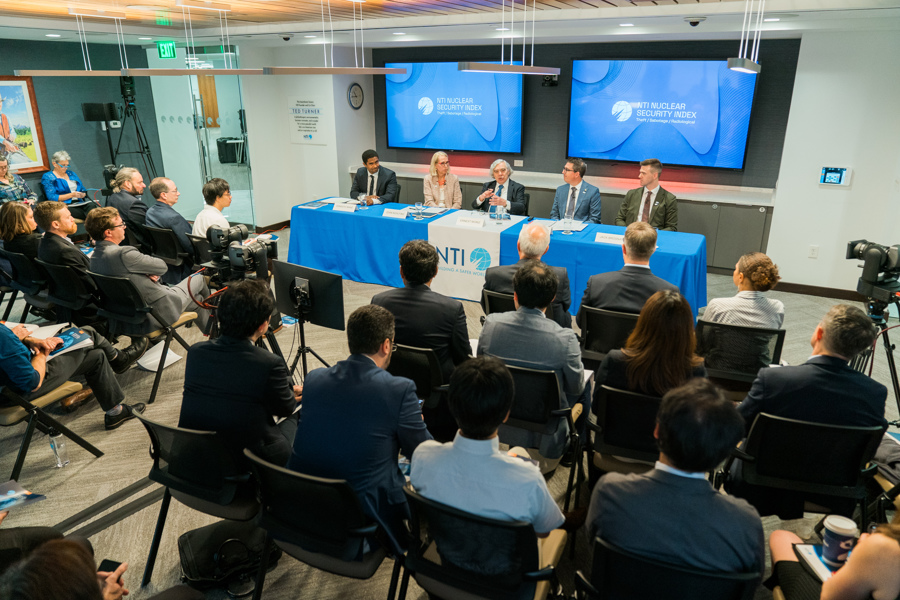
Sam Nunn Addresses Nuclear Industry Summit 2016
Sam Nunn said governments and industry must continue to work together to prevent nuclear and radiological terrorism.
"First Joint U.S.-Russia Assessment of Nuclear Terror Threat"
Study Warns of Multiple Dangers, Calls for Urgent Action
Press Release, Belfer Center for Science and International Affairs, Harvard Kennedy School
Author: James F. Smith, Communications Director, Belfer Center for Science and International Affairs
Belfer Center Programs or Projects: The US-Russia Initiative to Prevent Nuclear Terrorism
Researchers from the United States and Russia today issued a joint assessment of the global threat of nuclear terrorism, warning of a persistent danger that terrorists could obtain or make a nuclear device and use it with catastrophic consequences.
The first joint threat assessment by experts from the world’s two major nuclear powers concludes: “If current approaches toward eliminating the threat are not replaced with a sense of urgency and resolve, the question will become not if but when, and on what scale, the first act of nuclear terrorism occurs.”
The study recommends measures to tighten security over existing nuclear weapons and the nuclear materials terrorists would need to make a crude nuclear bomb, along with expanded police and intelligence cooperation to interdict nuclear smuggling and stop terrorist nuclear plots. The report also calls for improved protection of nuclear facilities that might be sabotaged, and of radiological materials that might be used in a dirty bomb.
The report, titled "The U.S.-Russia Joint Threat Assessment on Nuclear Terrorism," released on Monday, June 6, in Cambridge, Mass., and in Moscow, results from a nearly year-long partnership by nuclear security experts from the Belfer Center for Science and International Affairs at Harvard Kennedy School and The Institute for U.S. and Canadian Studies in Moscow, a leading Russian research center.
The lead U.S. and Russian authors are Rolf Mowatt-Larssen, a senior fellow in the Belfer Center and a former director of intelligence and counter-intelligence at the U.S. Department of Energy, and Pavel S. Zolotarev, a retired army general who is deputy director of Moscow’s Institute for U.S. and Canadian Studies, at the Russian Academy of Sciences, and former head of the Information and Analysis Center of the Russian Ministry of Defense. “
If you look at the U.S. and Russia together, we own about 90% of the problem – more of the weapons, less of the nuclear materials. So it’s only right that these two countries share their expertise and look hard at ways to work together to lower the risks,” said Mowatt-Larssen. “The United States and Russia have never produced a document that could be said to represent a common understanding of the nuclear terrorism threat. This can now be used as a basis for driving action in both governments.”
Zolotarev said: "Russia and the United States have paid more attention to nuclear weapons and nuclear deterrence, even though neither of our two countries has a political need to rely threat of nuclear terrorism, which constitutes a more real threat than the enormous arsenals of nuclear weapons in both countries. The threat of nuclear terrorism is increasing. Our response should anticipate the dynamics of the threat rather than lag behind it."
The researchers’ joint assessment was reviewed and endorsed by a group of retired U.S. and Russian senior military and intelligence officers, led by General Anatoliy S. Kulikov (former Minister of Interior) and General Eugene E. Habiger (former STRATCOM commander). This “Elbe Group” was established in October 2010 to create an informal communication channel on security issues of concern to both the United States and Russia.
The Joint Threat Assessment was coordinated by the Kennedy School’s U.S.-Russia Initiative to Prevent Nuclear Terrorism, which is directed by William Tobey, a senior fellow in the BelferCenter and former top official in the National Nuclear Security Administration. The assessment project was supported by the Nuclear Threat Initiative, a non-profit organization in Washington that works to reduce threats from nuclear, chemical and biological weapons. “The joint threat assessment accomplishes something that so far governments have been unable to do: gauge the threat of nuclear terrorism from differing national perspectives, and thereby form the basis for effective action to defeat it,” said Tobey. “This will help to overcome the number one barrier to improved nuclear security–complacency."
Key Findings
The joint assessment examines potential terrorist pathways to a nuclear attack, among them buying or stealing an existing weapon, or getting highly enriched uranium or plutonium and fashioning a crude nuclear bomb of their own, which the study warns is distressingly plausible.
It also concludes that while the killing of Osama bin Laden damages al Qaeda’s capacity to carry out nuclear terrorism, surviving leaders of the group retain nuclear terror ambitions. The joint report documents that al Qaeda has been working for years to acquire the nuclear materials and expertise needed to make a crude nuclear bomb, getting as far as carrying out explosive tests for their nuclear program in the Afghan desert. The report outlines the steps terrorists could follow and envisions how a terrorist nuclear plot might be structured – and how countries should work together to stop it.
The study notes that in addition to al Qaeda, terrorists from the North Caucasus region remain committed to carrying out catastrophic attacks, have carried out reconnaissance at nuclear weapon storage sites, have plotted to hijack a nuclear submarine with nuclear weapons on board, have planted radiological materials in Moscow, and have repeatedly threatened to attack nuclear power plants. These groups include factions in Chechnya, Dagestan, Ingushetia and elsewhere.
Among the joint assessment’s recommendations:
English and Russian versions of the complete report are available here.
Related Research
Securing the Bomb 2010, produced jointly by the Project on Managing the Atom, Belfer Center, and the Nuclear Threat Initiative in Washington.
Promoting Safe, Secure and Peaceful Growth of Nuclear Energy: Next Steps for Russia and the United States, a joint report by the Belfer Center and the Kurchatov Institute in Moscow.
"Still Building Bridges with Russia on Security," from the Spring 2011 Belfer Center newsletter.
For more information about this publication please contact the Belfer Center Communications Office at 617-495-9858.
Sign up for our newsletter to get the latest on nuclear and biological threats.
Sam Nunn said governments and industry must continue to work together to prevent nuclear and radiological terrorism.
“The bottom line is that the countries and areas with the greatest responsibility for protecting the world from a catastrophic act of nuclear terrorism are derelict in their duty,” the 2023 NTI Index reports.
NTI welcomes the G-7 leaders’ statement as they meet in the city where a nuclear weapon was used in war 78 years ago.


